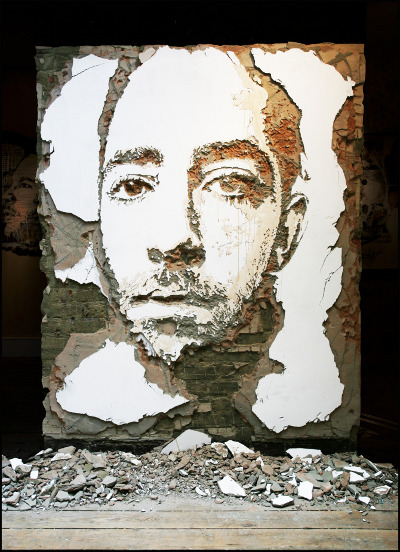Technology and Art
Oftentimes the merger of technology and art produces wonderful and fascinating things. It is maybe the kind of art I personally enjoy most since I can easily relate to it. Here are some examples I recently discovered:

Alexandre Farto is “Vhils”, a Portuguese-born artist who amongst other things carves faces into wall. This alone, while really great, does not really merge technology and art. In this video one can guess how the artist works.
But this video depicts Vhils’ art in an even cooler light: it gives the illusion, that the artwork is literally blasted in the wall. Truly amazing.
I discovered this through a “hack a day” article. The article does not say much about how it is done. There’s a lively discussion in the comment section of article.
People seem to agree, that the artist in some cases carves the sculpture in the wall, covers the work and later unmasks it. He might use rubberized explosive: flat sheets of solid but flexible material that can be cut to specific shape, bent around solid surfaces and glued or taped in place (Source: Wikipedia).
I have to agree with reader’s opinions that is is rather unlikely that these are controlled explosions and that the artists creates his work through designing the explosions. The work is nonetheless impressive. You can find more images like this an other works on the artist’s website.
The merger of art and technology is more apparent in the work of generative artists such as Michael Hansmeyer. In the work presented here, the artist designs columns using subdivision processes. He feeds his algorithm parameters that result in a distinct local variance in the patterns that are generated. This results in columns with millions of faces (image on the left).

The artists calls his work Computational Architecture. But generating a column model is only the first step of his process. In a second step the columns are actually produced as a layered model using 1mm sheet. That is 2700 sheets for a 2.7 meter high column. Cutting paths are calculated by intersecting the column with a plane and sheets are cut using a mill or a laser. The image on the right shows part of a fabricated column. I guess the color is a result of the fabrication process.
Read more about the artist’s process here including a video of a rendered column. More column images can be found here.
No Comments
Sorry, the comment form is closed at this time.